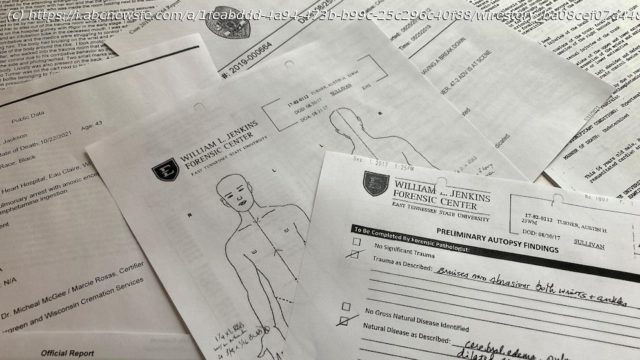The federal government has struggled for years to track deaths that happened after police used force like physical restraints and Tasers that isn’t supposed to be lethal
After George Floyd was killed under a Minneapolis police officer’s knee, reporters at The Associated Press wanted to know how many other people died following encounters in which law enforcement used not firearms but other kinds of force that is not supposed to be fatal.
The U.S. government is supposed to track these non-shooting deaths, but poor implementation and inconsistent reporting from local law enforcement agencies mean no one really knows the scope.
A team of journalists led by the AP spent three years reporting on deaths after “less-lethal force.” For that investigation, done in collaboration with the Howard Centers for Investigative Journalism and FRONTLINE (PBS), reporters created a new database that provides the most complete accounting yet of these cases, and new opportunities to understand patterns in policing.
The investigation identified 1,036 deaths over a decade following encounters that involved less-lethal force. Some cases are well-known. Others have not been reported publicly. The total is undoubtedly an undercount — deaths can be hard to verify, including due to the deliberate suppression of information.
More than 800 of the more than 17,000 law enforcement agencies in the U.S. had at least one documented fatality. The nation’s 20 largest cities accounted for 16% of deaths.
To be included, cases had to meet the following criteria. Primary source documentation was required to verify each case, typically records from government agencies. News reports or lawsuit allegations alone were not enough to substantiate a case.
WHAT: Encounters that involved at least one type of force, restraint or less-lethal weapon beyond handcuffs.
Holding someone facedown in what is known as prone restraint and Tasers were the most prevalent types of force. Blows with fists or knees, takedowns and devices to restrain people’s legs were also common. Less so were chokeholds, pepper spray, spit hoods, dog bites and bean bag rounds fired through a shotgun. Reporters excluded deaths by firearm and car crashes after police pursuits.
Inclusion does not always mean excessive force. In about half of the cases, the medical examiner or coroner concluded that law enforcement caused or contributed to the death.
Fewer than 10 deaths were ruled suicides. Such cases were included only when officers used significant force, for example a Taser to shock someone so they would stop slashing themself.
Домой
United States
USA — mix This is how reporters documented 1,000 deaths after police force that isn't...






